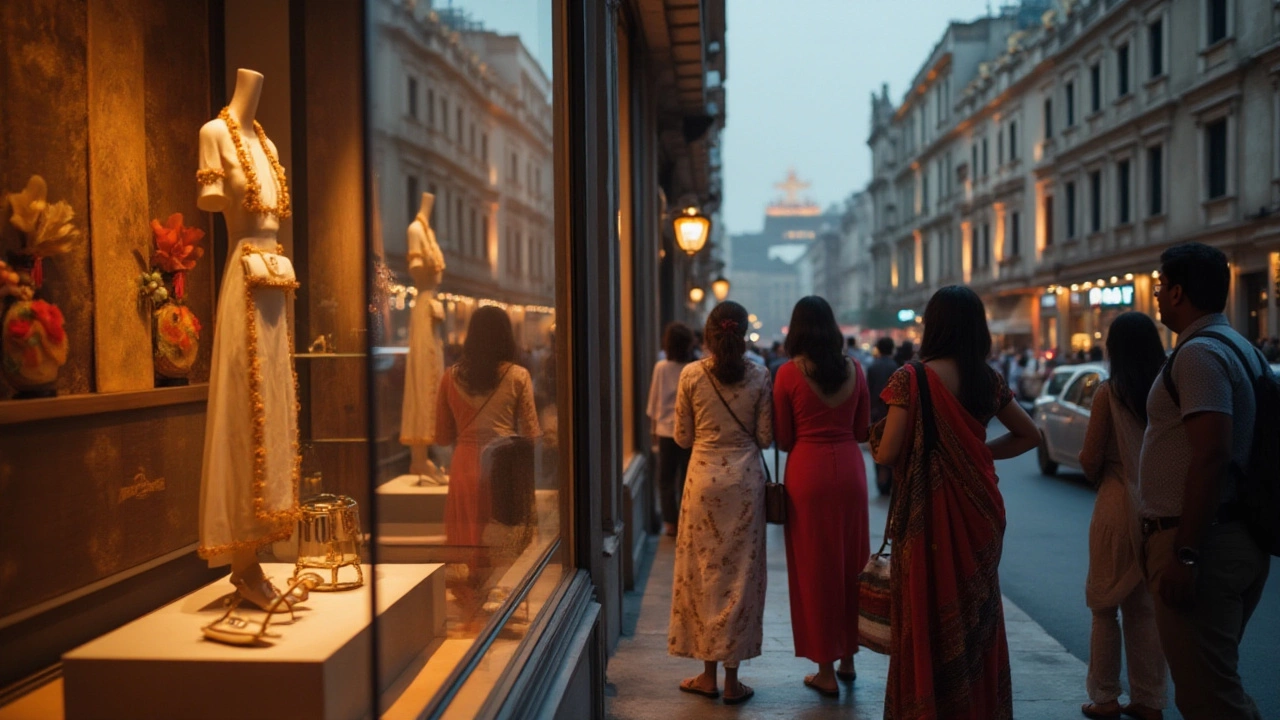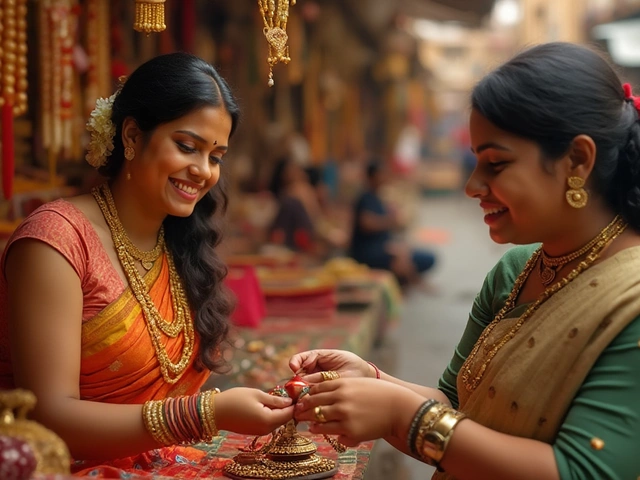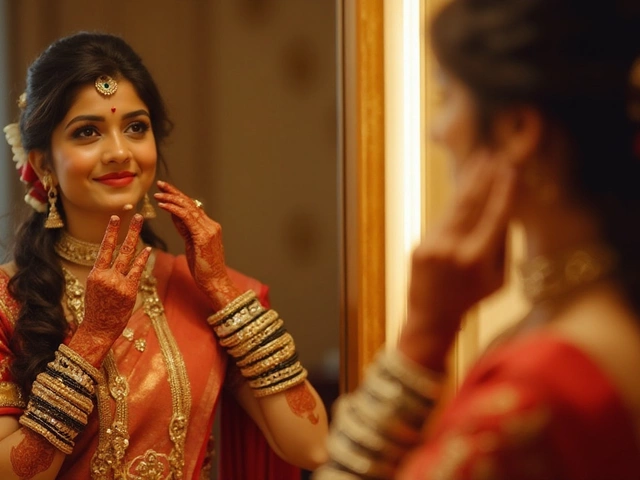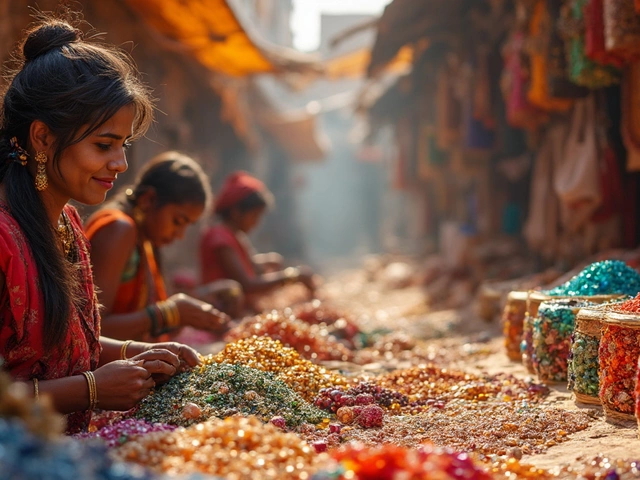The luxury market in India isn't as straightforward as it might seem. With a booming middle class and a potential to spend, this gaze into India's luxury brand scenario reveals more than just numbers. There are cultural and economic layers to peel back.
First off, India is a land of diverse traditions and societal expectations. Luxury brands need to consider not just the affluent but the aspirational who, guided by cultural values, might shy away from overt luxury. Moreover, India's longstanding appreciation for homegrown talent means local brands are often preferred.
Economics also plays a crucial role. While there is a rise in disposable income, the gap between rich and poor means that luxury isn't accessible to everyone. This suggests a need for tailoring marketing strategies for different segments.
Brands aiming to capture this market must think beyond their typical strategies. Blending tradition with modernity and understanding local tastes could make luxury brands more appealing. Strategies that respect and integrate these factors stand a better chance in this unique and promising marketplace.
- Understanding the Indian Consumer
- Cultural Influence on Brand Perception
- Economic Factors and Accessibility
- The Rise of Local Brands
- Strategies for Luxury Brands in India
Understanding the Indian Consumer
The Indian consumer is as diverse as the country itself, with a rich tapestry of cultures, languages, and traditions influencing buying habits. Often, it is assumed that Indians are drawn to luxury brands, seeing them as status symbols. But there is more to the story. Consumers in India are increasingly driven by a blend of values where brand authenticity, product quality, and cultural connotations play major roles. Unlike Western markets, where brand fame sometimes trumps all, the Indian consumer delves into the meaning and story behind each brand. This shift is particularly evident among younger buyers, who seek brands aligning with their values. With a growing awareness about environmental and social impacts, there is a palpable demand for brands that offer authenticity and sustainability.
As the economy grows, it's creating a wide spectrum of consumers – from the burgeoning middle class to the ultra-rich. The middle class, often aspirational, is thrifty and values money highly. They're inclined toward spending on durable and heritage products rather than ephemeral luxury items. Meanwhile, the wealthy class, though small, is discerning and well-informed. They no longer just shop for the sake of exclusivity but look for personal relevance and historical ties. For example, the Mahatma Gandhi collection by a Swiss brand resonated well due to its cultural significance. These shifts are redefining how fashion accessories from luxury brands are perceived. Brands need to go beyond catalog lines and tap into the emotive pulse of consumers. As one Indian marketing expert said,
"In India, the product speaks, but the story sells."
Data suggests that the top luxury spenders are often from metropolitan cities such as Delhi, Mumbai, and Bangalore, where there's more exposure to international trends. Indian consumers from these urban backgrounds are tech-savvy, using digital platforms to research and even purchase high-end goods. An emerging trend is the appreciation of personal shopping experiences, like in curated exhibitions or bespoke tailoring services. These experiences provide an intangible value that many consumers now seek. This is an essential insight for brands – creating personalized engagements can be key to success.
India is also witnessing a shift where traditional consumer values interact with global perceptions. There's a strong influence of region-specific preferences on buying decisions. In regions where traditional clothing is predominant, luxury brands see opportunities in aligning their offerings with local sensibilities. Brands successful in India often tweak their products for relevance, like incorporating Indian motifs or regional textiles into their designs. This thoughtful adaptation helps them carve a niche. The idea isn't just to sell a product but to become part of the consumer's lifestyle and culture.
Luxury market India faces a unique challenge of catering to a culturally rich, economically diverse, and swiftly changing consumer base. For brands entering this market, success lies in deciphering these nuances. Understanding the driving forces behind consumer preferences isn't merely about identifying what they buy, but unveiling why they buy it. It's this complexity – the dance of tradition with modernity – that makes the Indian market both challenging and highly rewarding for those willing to invest the effort.
Cultural Influence on Brand Perception
India is a tapestry of a thousand vibrant cultures intertwined with modern consumerism. The perception of luxury brands in India is deeply rooted in the country's rich cultural fabric. Unlike Western countries, where luxury often represents personal success and individuality, in India, consumption is more a reflection of collective social identity. People tend to opt for purchases they believe reflect their societal values and familial heritage. This mindset can often position luxury goods as unnecessary extravagance unless they hold significant cultural or familial value. Various cultural ceremonies and strategic marketing campaigns must align with these family-oriented values to sway Indian consumers. Even globalization can't dilute these traditional perspectives that are century-old. Besides, the younger generation, while influenced by Western trends, often seeks products that acknowledge their traditional roots.
It's crucial to understand how luxury in India is tied to aspirations rather than solely affluence. Many Indian consumers value brands that align with their identity and cultural narratives. This connection means that luxury purchases are not just a statement of wealth; they are about heritage, legacy, and a storyline embedded in the larger fabric of life. According to a survey by KPMG, approximately 36% of Indian consumers consider brand heritage and cultural rootedness a vital factor when purchasing luxury items, indicating a strong inclination toward these aspects.
"Luxury brands must tread carefully in India, balancing global trends with local ethos," notes Radha Chadha, author of The Cult of the Luxury Brand.
Diving deeper, the role of festivals and auspicious occasions in influencing purchases cannot be overstated. Festivals like Diwali and weddings, where gifting plays an essential part, often see an uptick in luxury spending. However, the fashion accessories India market must be sensitive to these timeframes, designing product rollouts that coincide with these culturally significant events to tap successfully into the market. Indian consumers may forgo flashy logos if the brand respects local customs and symbols. Additionally, the rise of Bollywood and influential personalities often steer public opinion on luxury brands, indicating a cultural lens through which the value and desirability of luxury are judged. Filmmakers and actors are seen as cultural custodians and their endorsement can bridge the gap between global luxury and Indian tradition.
With the wealth of regional cultures, one-size-fits-all marketing rarely works. Brands desiring entry into the Indian market should consider localized touch points, such as embracing regional languages in advertising and crafting stories around local folklore and traditions. This involvement provides a strong resonance with the Indian value system. Moreover, understanding the influence of spirituality is also pivotal; brands like Zegna have previously launched exclusive collections in India inspired by spirituality, magic, and astrology. By embracing these nuances, luxury brands can truly resonate with the Indian psyche, offering products that aren't just material commodities but meaningful experiences and articulations of identity.

Economic Factors and Accessibility
The daunting maze of economic factors is a significant reason why luxury brands face an uphill battle in India. The country, while home to some of the world’s wealthiest individuals, encompasses vast economic disparities. On one hand, there's a burgeoning middle class with aspirations for a finer lifestyle, and on the other, a significant chunk of the population still grapples with basic necessities. This uneven distribution of wealth heavily influences the accessibility of high-end fashion accessories. A poignant aspect is the consumers’ decision-making process. Often, buyers in India weigh the utility and longevity of a product over its brand value, especially when it comes with a hefty price tag.
An interesting survey by McKinsey revealed that about 30 million households in India are set to enter the millennial income bracket by 2025, showcasing a promising upsurge in potential luxury consumers. But, convincing them to choose international luxury over local choices can be challenging. Many of these families prioritize education and healthcare over high-end fashion. Unlike western countries, where luxury is often synonymous with social status, in India, the idea of investing in practical goods is deeply embedded.
According to Sachin Doshi, an analyst, "Luxury in India must transcend beyond exclusivity and focus on being aspirational yet accessible."Furthermore, import duties on luxury goods contribute to making these items exceedingly pricey compared to local substitutes.
Taxes, tariffs, and logistics also play a significant role. The fifth-largest economy has an intricate tax system that isn't exactly luxury-friendly. High import taxes on luxury brands can inflate their prices up to 20-30% more than in other countries. While metros like Mumbai and Delhi show a definitive tilt towards luxury spending, smaller cities often feel this price implication more acutely. Notably, the digital revolution is gently adjusting this balance. E-commerce platforms and online marketplaces have emerged as potential game changers. They've enabled luxury brands to reach wider audiences without the astronomical cost of maintaining physical stores. Shoppers, especially the tech-savvy youth, enjoy the convenience of browsing high-end products from the comfort of their homes. Yet, the digital divide is palpable in rural areas, posing an access barrier.
Financial institutions and the banking sector in India are making strides in making luxury more accessible. Wealth management services and customized credit options are being tailored for the affluent. Table below gives an insight into the socio-economic bandwidth of Indian purchasers:
| Income Group | Percentage of Population | Tendency to Purchase Luxury |
|---|---|---|
| Upper Class | 1% | High |
| Middle Class | 25% | Moderate |
| Lower Income | 74% | Low |
Ameliorating economic indicators such as GDP growth rate strengthen the future prospects. For luxury brands, crafting unique marketing messages which resonate with Indian values of inheritance and tradition, while conveying modern exuberance, could position them better. This fine balance between aspiration and affordability, anchored with innovative approaches could open doors for success. Hence, understanding the meticulous dance of economics within India is absolutely essential for international fashion entities.
The Rise of Local Brands
In recent years, India's fashion scene has witnessed a fascinating shift with the burgeoning emergence of local brands challenging established luxury giants. This change isn't just about patriotism; it's a nuanced blend of cultural revival and modern sensibility that appeals to a broad spectrum of consumers. Traditionally, Indian craftsmanship has been revered, with intricate textiles and handcrafted techniques telling stories of ancient art. Contemporary local brands are weaving these age-old techniques into modern designs that resonate with a younger, more conscious demographic. Importantly, this younger generation values supporting sustainable and ethically produced goods, a quality that many Indian brands proudly uphold.
Financial accessibility plays a crucial role as well. While global luxury brands often carry hefty price tags, local offerings provide high quality at a more digestible price range. This financial accessibility combined with cultural resonance has been a driving factor in the rise of Indian brands in the fashion accessory space. Ecommerce platforms have further leveled the playing field by offering visibility and reach to these emerging players. Social media has been a game-changer too, where storytelling and authenticity attract significant followings. Interestingly, a quote from local design expert Ritu Kumar elucidates this trend:
The discerning Indian customer is no longer swayed by just the label alone; a personal connection with the product's story is what matters now.
The rise of local brands also coincides with an increasing preference for personalized and bespoke experiences over mass-produced luxury. Many Indian brands offer customization options, allowing consumers to co-create designs, an opportunity less available at international luxury houses. Local brands often celebrate regional artisans, ensuring that shoppers gain pieces with rich histories. Celebrated designers like Sabyasachi Mukherjee have positioned traditional attire as dream purchases by infusing haute aesthetics into local flavor. This strategy pays homage to the craftsperson while simultaneously elevating the brand's status. Notably, the power of collaboration cannot be dismissed. Partnerships between these local brands and international icons are on the rise, providing a platform for cultural exchange and mutual respect, opening up dialogues that enrich the fashion narrative globally.
The data underscores this trend with Indian luxury consumption steadily increasing at an impressive rate:
| Year | Market Growth |
|---|---|
| 2021 | 12% |
| 2022 | 15% |
| 2023 | 18% |
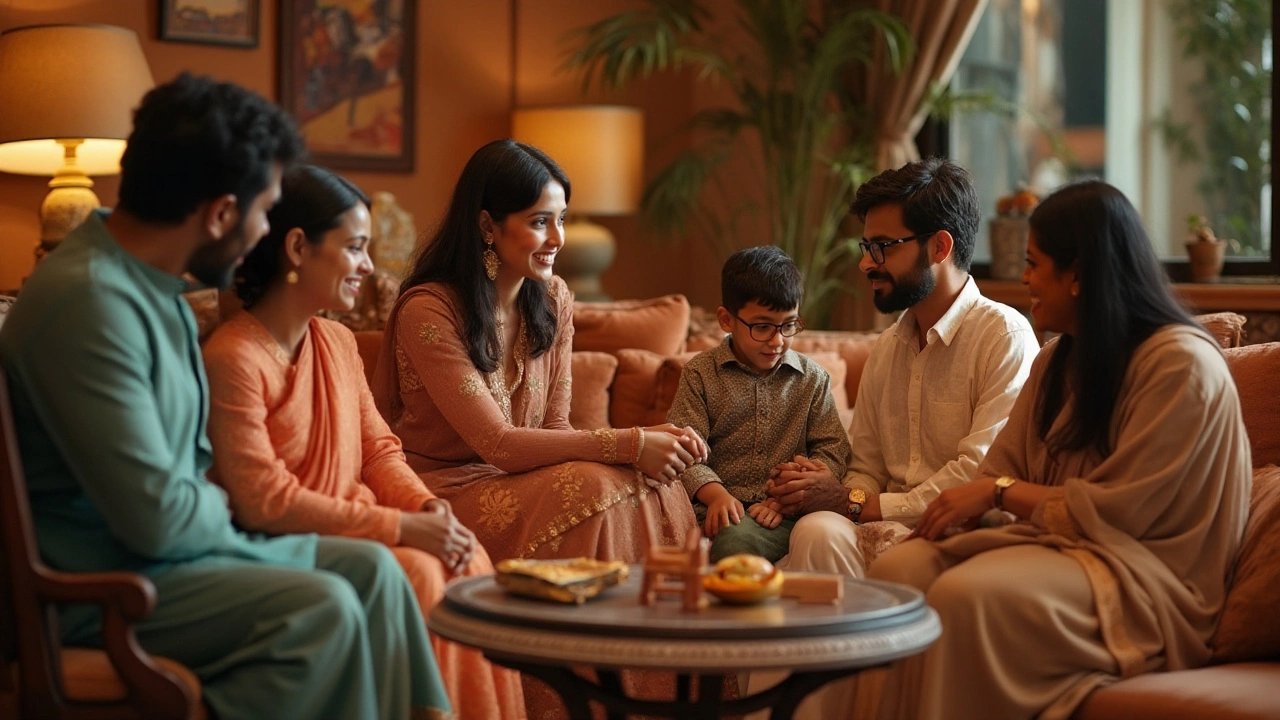
Strategies for Luxury Brands in India
India's burgeoning market presents both challenges and opportunities for luxury brands eager to make an impact. Understanding India's cultural nuance and economic diversity is crucial. One effective strategy is localization, which involves adapting not just products but also marketing tactics to align with regional preferences and traditions. Luxury brands should appreciate India's diversity, customizing their offerings for different states. For instance, a focus on traditional crafts and materials like silk and embroidery can resonate well with the Indian ethos. By integrating aspects of Indian heritage, luxury brands could kindle a more profound connection with their target audience.
Local partnerships can prove beneficial as well. Collaborations with Indian designers or influencers who have a strong cultural resonance can boost a brand’s appeal. This approach not only enhances credibility but also offers a relatability factor that global brands might lack initially. According to a recent study, luxury brands that have partnered with Indian artisans witnessed a 25% increase in sales. Engaging with local craftsmanship can not only capture the consumers' hearts but can also align with the growing global emphasis on sustainability and ethical sourcing.
Another crucial aspect is pricing strategy. The idea of luxury is often associated with premium pricing, yet adaptability could be the key in India. Offering a range of products that cater to different segments while maintaining exclusivity could entice the burgeoning middle-class segment. Luxury brands could take cues from automobile brands like Mercedes-Benz, which introduced entry-level models in India with tremendous success. When done respectfully, it doesn’t dilute the brand but rather broadens its consumer base.
In today's digital age, a robust online presence can no longer be ignored. E-commerce platforms are seeing a growing share in luxury sales, as highlighted by the 30% increase recorded by several luxury fashion houses last year. Younger consumers, in particular, prefer exploring and purchasing online. Investing in platforms that offer virtual reality experiences can simulate in-store purchases and attract technologically savvy consumers. Alongside digital upgrades, brands should not lose out on enhancing in-store experiences for those who seek them.
Building an emotional tether with consumers through storytelling can create a lasting impression. For instance, campaigns that narrate personal stories or heritage journeys can make brands more relatable. As Coco Chanel once said,
“Fashion is not something that exists in dresses only. Fashion is in the sky, in the street, fashion has to do with ideas, the way we live, what is happening.”Engaging narratives distinguish a brand beyond its products, making it part of the consumer's lifestyle. By weaving their unique story into India's rich tapestry, luxury brands have the potential to not only carve a niche but to blend as an aspirational choice in this intriguing market.
